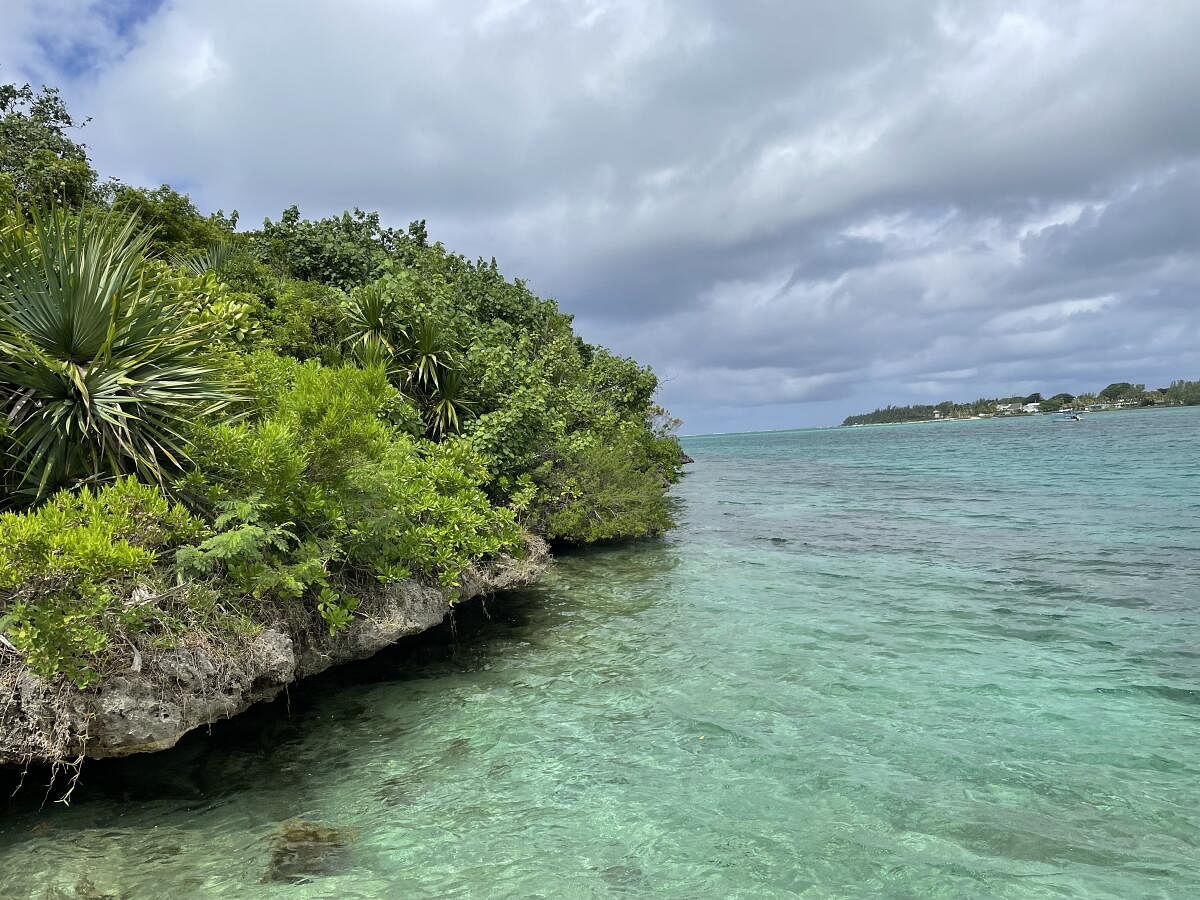

“You are just about to step into a Mauritius that the first explorers, the Dutch sailors saw 500 years ago when they landed here,” says my guide, who is a naturalist with the Mauritius Wildlife Foundation. I look around and realise that I am in a time capsule — a fragment of natural forest with a dense canopy of endemic and endangered vegetation that has been replanted virtually to create an authentic Mauritian dry coastal forest of rare ebony trees and species of palms amidst others.
The earth below me is marshy as the forest floor is filled with entwined roots while I navigate serpentine branches that lend a tinge of mystery to the raw jungle. And amidst the deep and dark reaches of woods and the leaf-strewn forest, we see a mammoth docile male tortoise, staring at us curiously, slowly chomping away at the leaves stuffed in his mouth. Whispers to be silent echo in the air as the naturalist introduces the veteran to us, “Meet Big Daddy!” I am in the tiny forested Ile aux Aigrettes, located at the mouth of the Grand Port Bay, on the southeast coast of Mauritius. This atoll, which is just 27 hectares, is a biodiversity hotspot now managed by the Mauritius Wildlife Foundation, that is restoring this last vestige of coastal forest and conserving and protecting the vulnerable flora and fauna. The atoll unlike the mainland is not of volcanic origin but is a coralline island and is named after egrets, who have long since disappeared. It was believed to be the last refuge of the legendary dodo before they went extinct.
However, critically endangered birds like the Mauritian fody, the pink pigeon and the olive white eye have found a safe haven here besides Ornate Day geckos and Telfair skink. As we listen to the story of Ile aux Aigrettes, we realise that the natural reserve tells a tale of lost heritage and the efforts being made to rescue and recreate the pristine woodlands.
Mauritius did not just lose the dodo but also two species of giant Mauritian tortoises who became a victim of colonial rule. However, the giant tortoises from the Aldabra atoll in Seychelles have been introduced here in a process that is referred to as “rewilding” by replacing an extinct species with a non-indigenous species to restore the ecological habitat. And the giant tortoises are helping to clean the island off the invasive species of flora.
Big Daddy is 90 years old and is more than just a show-stopper here. We quietly move to get a closer look as he playfully inches his long wrinkly neck and head towards us.
The naturalist explains that the tortoises have been bred here and that they also become “gardeners” by dispersing the seeds of the replanted native species on the island. We leave Big Daddy to his grazing as we walk through the wilderness where several young tortoises are bred. The trees are now home to the almost extinct pink pigeons that were introduced here. Indeed every flora and fauna in this emerald-tinged nature reserve has been reintroduced and restored by conservationists. There is a tiny nursery here as well, besides a museum with sculptures and paintings of the lost natural heritage.
The nature walk is about 90 minutes and it takes us to the historic past of Mauritius, when the colonial powers landed on the shores of Mahebourg, just 800 metres away.
Speedboats to the island embark and disembark from the quay at Pointe Jerome on the mainland.
The original port capital and the islets around it, including the Ile aux Aigrettes are still home to crumbling monuments, which are the remnants of the colonial rulers — from the Dutch to the French and English. The British even used Ile aux Aigrettes as their military base.
And while they may have created history on the shores, they have robbed Mauritius of its natural wealth, the indigenous flora and the endemic species of wildlife which are now being slowly restored in this little haven.
The habitat
Ile aux Aigrette is a tiny islet that is about 27 hectares of coralline limestone blended with deposits of sand and is now a conservation story. The original habitat was destroyed by the colonial powers by introducing invasive flora while the native birds and animals became extinct along with the native vegetation. It was eventually established as a natural reserve and has been restored by Mauritius Wildlife Foundation, to its original ecosystem, well before the arrival of the explorers.
Located on the pristine southeast coast of Mauritius, it’s just
a 10-minute boat ride away from the Pointe Jerome jetty at Mahebourg. The 90-minute nature walk helps you to understand the efforts of the MWF, a non-profit organisation.
As the conservation story unravels in the forested depths of this island, look out for endemic birds and geckos besides the introduced giant tortoises from Aldabra in Seychelles, who are now bred here. Combine this trip with a half a day trip to Mahebourg and visit historic forts and museums.